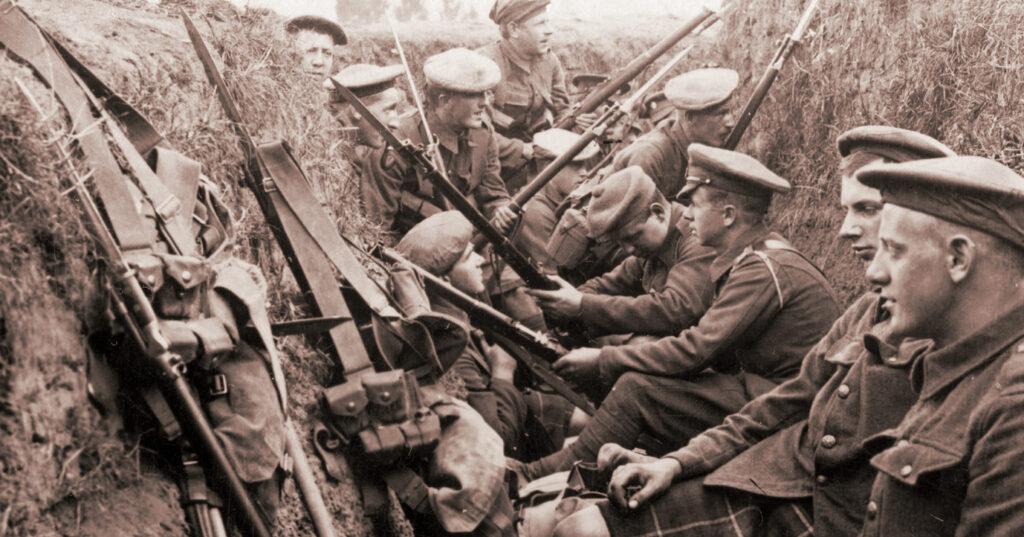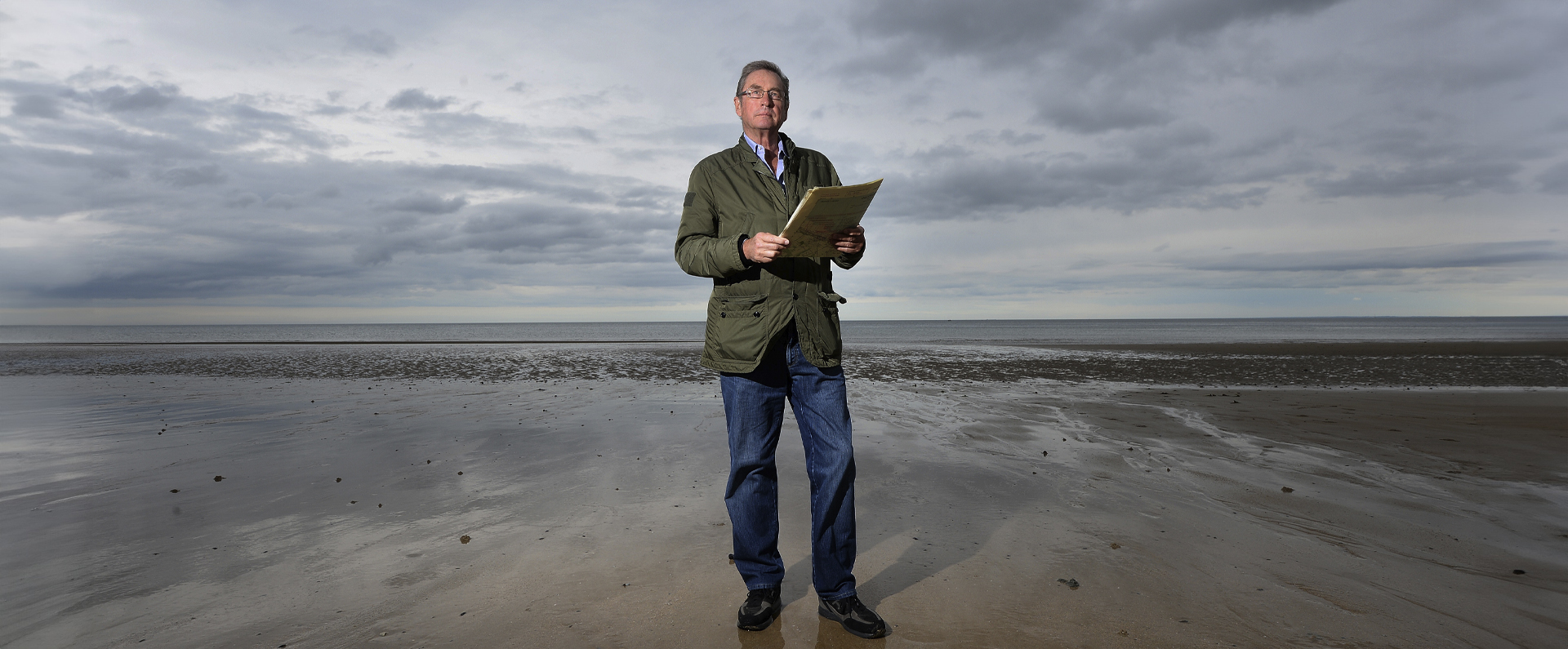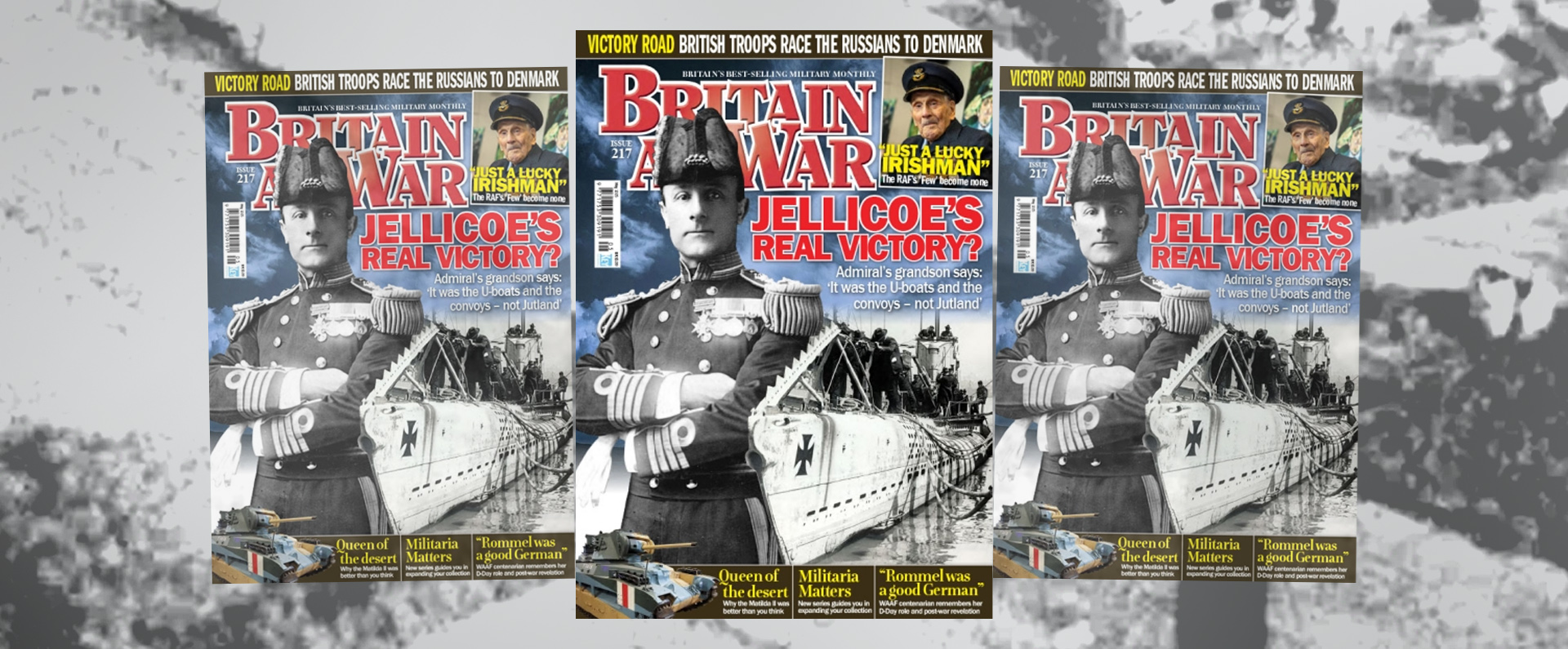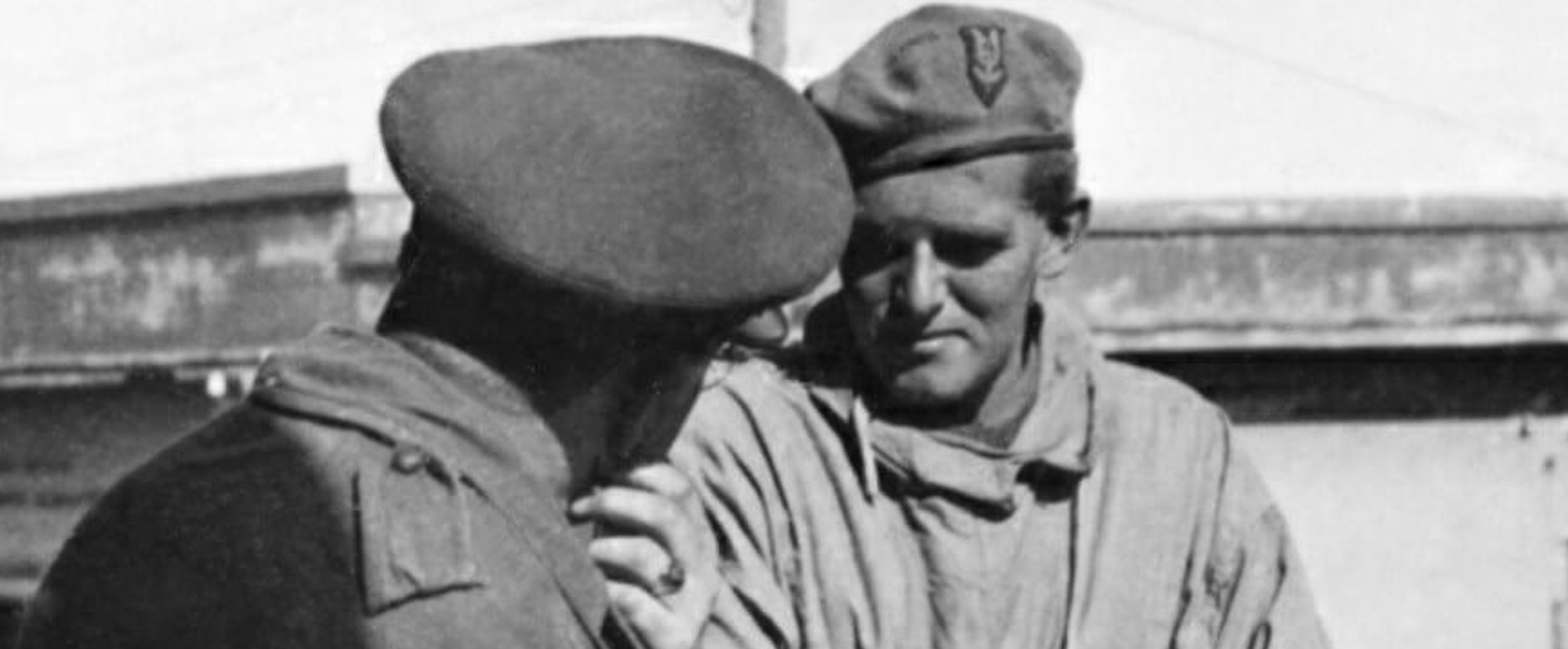
Published in Britain at War in March 2021.
Sergeant Thomas Steele VC
Just as they have been in more recent times, gallantry awards in Iraq were hard earned during the Great War. Throughout the four years of fighting in Mesopotamia (as Iraq was then known), few soldiers displayed greater courage than Sergeant Thomas Steele who was awarded the VC for a day of relentless bravery in the most difficult of circumstances early in 1917.
Thomas Steele was born in Claytons, Saddleworth, Lancashire, on February 6 1891. Of Scottish descent, he was one of four children and the eldest of three sons born to Harry Steele, a cotton worker, and his wife Elizabeth (née Mitchell). All three brothers eventually served in the Army during the 1914-18 war.
Young Thomas Steele was educated at Austerlands Day School in Saddleworth and also attended Shelderslow Sunday School. After leaving school, Steele worked as a bobbin carrier at Rome Mill, Saddleworth, a lowly-paid job in the cotton industry that involved carrying spools of thread to the looms ready for use by the weavers.
However, on August 22 1911, well before war loomed, Steele enlisted into the 1st Battalion, Seaforth Highlanders, aged 20. Serving as a private, he was embarked for India, where he was stationed from December 1912.
At the outbreak of the Great War in August 1914, Steele, by then a lance corporal, was still in India, based with his battalion at Agra. On September 20 1914, he left with the 7th (Meerut) Division as part of the Indian Expeditionary Force. On October 12, Steele and his comrades arrived at Marseilles, southern France, ready for service on the Western Front as part of 19th Brigade.
Over the next few months, Steele was repeatedly in the thick of the action, serving in the retreat from Mons, as well as at Ypres, La Bassée and Neuve Chapelle. On June 1 1915, he was promoted to corporal and in September that year he took part in the Battle of Loos. In October 1915, he was promoted to lance-sergeant and the next month, after being given 24 hours leave, he left France with the 7th (Meerut) Division for Mesopotamia.
Then, as now, the area was rich in oil reserves and a principal aim of Britain’s campaign in Mesopotamia was to protect the Anglo-Iranian Oil Company’s installations at Mohammerah and Abadan Island, some 40 miles from the mouth of the Shatt-al-Arab waterway on the Persian side of the border.
Britain had declared war on Turkey on November 5 1914 and the first British troops landed in Mesopotamia the next day. Basra, on the west bank of the Shatt-al-Arab waterway, was occupied on November 23 and was the base for the Mesopotamian Expeditionary Force during the war.
During 1915 and 1916, there was heavy fighting in Mesopotamia with mixed fortunes for the British force. The low point was, without doubt, the surrender by General Townshend and his garrison at Kut-el-Amara on April 29 1916, after a five-month siege.
Steele had seen action during this period and in January 1917, he was promoted to sergeant. During his time in Mesopotamia, he suffered bouts of ill health, notably malaria but this did not prevent him from taking part in the thick of the fighting.
The month before his promotion the new Commander-in-Chief, Lieutenant-General Sir Stanley Maude, had begun a second advance up the Tigris, one of the two great rivers along with the Euphrates) that passed through Mesopotamia
By mid February 1917, the south bank of the Tigris had been largely cleared of enemy fighters. However, the Turks remained well entrenched along the northern bank, from Sanna-i-Yat east of Kut-el-Amara to the Shumran peninsula to its west.
Maude devised a plan to attack the Turks on both fronts, but the initial attack on Sanna-i-Yat on February 17 failed to achieve any breakthrough. On February 22, he launched another attack on the same area, with the intention of drawing enemy soldiers away from Shumran so that British troops could cross the river from the south bank.
The 1st Seaforths (19th Infantry) Brigade, 7th (Meerut) Division stood to arms at 5.30am that day and at 6.30am the British artillery began to bombard the enemy’s camp behind their trench line and heavy fighting ensued.
During intensive fighting, the first two lines of Turkish trenches were seized. Although the enemy counter-attacked and temporarily regained some of their trenches, they were eventually driven out again.
It was during this fighting that Steele showed such exceptional bravery that he was, in the words of his letter home to his parents, “recommended for something”. That something was none other than Britain and the Commonwealth’s most prestigious award for bravery in the presence of the enemy. In fact, Steele’s VC was announced in The London Gazette on June 8 1917 when his citation stated:
“For most conspicuous bravery and devotion to duty. At a critical moment when a strong enemy counter-attack had temporarily regained some of the captured trenches, Sjt. Steele rushed forward and assisted a comrade to carry a machine gun into position. He kept the gun in action till relieved, being mainly instrumental in keeping the remainder of the line intact.
“Some hours later another strong attack enabled the enemy to reoccupy a portion of the captured trenches. Again Sjt. Steele showed the greatest bravery, and by personal valour and example was able to rally troops who were wavering. He encouraged them to remain in their trenches and led a number of them forward, thus greatly helping to re- establish our line. On this occasion he was severely wounded.
“These acts of valour were performed under heavy artillery and rifle fire.”
Steele, by then aged 26, received no less than 12 separate wounds during his VC action and was treated for his severe injuries in Malpa hospital, India.
His bravery and that of his comrades was, however, richly rewarded . On February 24 1917, two days after Steele’s VC action, Maude and his forces re-entered Kut-el-Almara and on March 11 Baghdad fell to the British.
The Oldham Chronicle quickly picked up on its local hero publishing an article in which they described Steele as “a gallant sergeant…of a most retiring disposition”. The paper’s report said “this sergeant received a telegram from the sergeant’s battalion headquarters last evening telling them of the award and asking him to send at once a photograph of Thomas who by the way had been offered a commission.”
During Steele’s VC action, he had been greatly helped to encourage the Indian troops by Private Joseph Winder, who was awarded the Distinguished Conduct Medal (DCM) and the French Médaille Militaire.
The citation for Winder’s DCM stated:
“For conspicuous gallantry and devotion to duty. He went forward under very heavy fire and assisted in establishing a machine-gun in the enemy’s second line. During the rest of the day he repeatedly carried messages and ammunition across ‘no man’s land’.”
Winder was later promoted to company sergeant major but died just nine days before the November 11 1918 Armistice.
Thomas was not the only member of the Steele family to serve with credit during the Great War: his middle brother, Samuel, served with the Royal Scots and, having been wounded, was in hospital in Cardiff at the time of Thomas’s VC award, whilst the youngest brother, William, served with the Highland Light Infantry.
Despite the severity of his injuries, Thomas Steele was soon back on the frontline and on August 15 1917 he was Mentioned in Despatches for further gallantry in Mesopotamia. In January 1918, Steele left the Persian Gulf region and from then until February 1919 he served in Egypt and Palestine. He was transferred to the Regular Army Reserve in February 1919 and his investiture by George V took place at Buckingham Palace on April 10 1919. For the remainder of his life, he was a keen supporter of VC and George Cross Association events, including attending the Buckingham Palace garden party of June 1920.
On April 9 1920, Steele briefly rejoined the Army only to be transferred to the Regular Army Reserve less than two months later. On June 8 1922, he was married in his home county of Lancashire to Bertha McCready. Steele played rugby league to a high standard: he played three matches as a professional for Broughton, one of rugby league’s founding clubs, and enjoyed a distinguished career as an amateur with his local club, Healey Street.
At some point in the late 1920s, Steele and his wife moved to Leicestershire where he worked for Central Motors of Leicester and also apparently as a wholesale fruiterer. During this time, he maintained his links to the military, enlisting in the Leicestershire Regiment (Territorial Army) on March 19 1932 after which he became a sergeant.
Just before the outbreak of the Second World War, Steele was called up and he served as a battery sergeant major with the Royal Artillery (Territorial Army). In 1941, and by then aged 50, Steele was posted to Leicester, where he served in the Home Guard before being discharged in April 1942. After the war, he continued to live in Leicestershire, working first as a telephone clerk and then with a car sales firm. He retired in 1956, aged 65. In his retirement, he continued to attend VC and GC events on a regular basis.
In a rare interview, with the Evening Chronicle in Oldham, Steele spoke of the difficult conditions for those serving in Mesopotamia, where they encountered dysentery and starvation.
In December 1977 and following the death of his wife, Steele returned to his Lancashire roots, living with his sister-in-law in Saddleworth. He died at his home on July 11 1978, aged 87, and was cremated six days later at Hollinwood Crematorium, Oldham.
In October 2003, Steele was one of three Great War VC recipients from Oldham who were honoured with a commemorative Blue Plaque. This was unveiled by Councillor Valerie Sedgwick, the Mayor of Oldham, following a service at the local parish church.
I purchased the Steele medal group privately in 2009 and I feel privileged to be custodian of this wonderful soldier’s gallantry and service medals. They are on public display at the gallery bearing my name at the Imperial War Museum in London.
Download a PDF of the original Britain at War article.
For more information, visit:
LordAshcroftOnBravery.com


